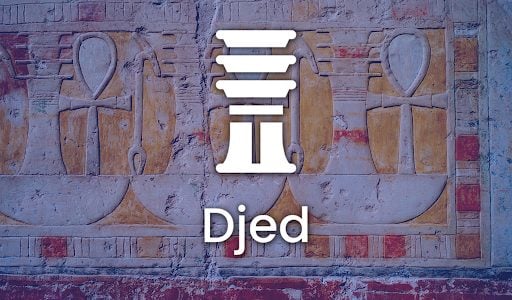
- There are many fundamental differences between the upcoming Djed stablecoin project and TerraUSD
- Research shows three-quarters of users (76.5%) would favor Djed over the centralized USDA stablecoin from Emurgo.
Recent news about the forthcoming launch of an algorithmic stablecoin on Cardano caused some skeptics to invoke $UST, the doomed dollar-pegged currency hosted by the Terra network.
Despite the easy comparisons, however, there are many fundamental differences between the upcoming Djed stablecoin project and TerraUSD, as the Cardano community itself seems to acknowledge: a CoinTelegraph Twitter poll of over 12,600 users saw 58.6% answer “Yes” to the question “Would you use Cardano’s algorithmic stablecoin?
A separate poll, which likely enjoyed confirmation bias since it was run by a member of blockchain-based payment platform COTI, the official issuer of Djed, found that over three-quarters of users (76.5%) would favor Djed over the centralized USDA stablecoin from Emurgo.
Different Strokes: Djed and UST Are Poles Apart
It is, of course, natural to be wary of any algorithmic stablecoin following the implosion of LUNA and UST earlier this year. That crash impacted the whole market, causing an estimated loss of $300 billion and forcing South Korean founder Do Kwon into hiding. But it must also be clarified that not all algorithmic stablecoins are the same.
Unlike UST, which had a fatal symbiotic relationship with sister token LUNA, in that holders could swap 1 UST for $1 LUNA, Djed can prevent a similar death spiral by blocking the burning and minting of coins.
UST, of course, could and did become under-collateralized: the stablecoin was only ever as safe as investors’ faith in LUNA, an asset whose reputation depended on the integrity of UST. The entire edifice was a blow-up waiting to happen, and when demand for UST slumped, the value of both currencies dropped like a stone as investors barged towards the exits.
Cardano’s new algorithmic stablecoin, which has been in the works for over a year, is a different proposition altogether. For one, it’s fully backed and overcollateralized (like DAI) with a significant reserve ratio of up to 8X. Indeed, the smart contract programmed to maintain the Djed system has enough reserves to buy back all the stablecoins in circulation for 1 USD worth of the backing asset, thus maintaining the dollar peg – with plenty of money left over.
Moreover, while LUNA and UST had a precarious circular dependency, Djed is backed by a sizable reserve of independent assets (namely $ADA) with their own inherent utility. The native token of the Cardano blockchain is used by developers to power smart contracts, by stake pool operators, by cryptocurrency investors, and others. It is a long-established top 10 cryptocurrency by market cap (#9 at the time of writing).
In the case of Terra, the network was halted and its BTC reserves manually managed in a desperate bid to save the UST peg. This drastic action saw BTC reserves of 80,000 drained to just 313, a brimming Bitcoin bathtub from which the plug had been pulled. Djed, on the other hand, is fully algorithmic and autonomous, meaning its operation doesn’t rely on decisions made by a centralized committee.
The other key difference between Djed and UST worth stressing concerns their respective revenue models. In the case of the latter, holders earned money from seigniorage and thus were incentivized to encourage projects like Anchor, which artificially kept stablecoins out of circulation while promising future yield. Holders of Djed’s reserve coin $Shen, meanwhile, earn through mint/burn fees and thus have an incentive to encourage stablecoins to remain in circulation – and to be burned and minted frequently via the contract.
Perhaps these fundamental points of divergence nurtured the optimism of the several-thousand poll respondents who gave Djed a firm thumbs-up. The stablecoin’s combination of on-chain proof of reserves, overcollateralization and autonomy – not to mention a recent audit and Vasil hard fork compatibility – bodes well ahead of its launch next month.
Of course, the best way for Djed to prove its worth will be in the wild, and the powers-that-be at COTI and Cardano will hope that its success helps to reestablish faith in crypto-backed algorithmic stablecoins post-Luna.







